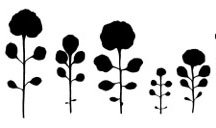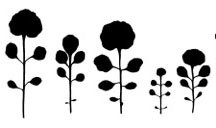Timing is everything – for plants too
Variation in leaf shapes within a plant species is caused by differences in how fast plants develop
Organisms differ in their morphology between species, within species and even within individuals at different stages of development. Researchers from the Max Planck Institute for Plant Breeding Research in Cologne, Germany, studied how different leaf forms arise within a single plant species, hairy bittercress, and discovered that varying development rates play a key role in the process. The pacesetter for this coordination process is a gene that also determines flowering time. Depending on how active the gene is, leaf form changes because plants progress through their development at different speeds. The scientists propose this as a simple way for evolution to have created new leaf forms within a species.

Miltos Tsiantis and his team of scientists are interested in how different leaf forms arise. They initially focused their research on the differences between species, and showed that local differences in tissue growth play a key role in this variation. They have now turned their attention to differences within one species, as their leaves also differ in form and size. Leaf shape also changes in an individual plant over the course of the life cycle. For example, leaves of the young plants of hairy bittercress (Cardamine hirsuta) are simple in form and have few leaflets but as the plant gets older, it forms more complex leaves with more leaflets. Tsiantis and his colleagues wanted to establish the genes responsible for such variations within the species.
To do this, the scientists worked with two plant lines. The Wa line originated from Washington State in the USA and the second line, Ox, came from Oxford in the UK. In their quest for the origins of the different leaf forms, they carried out crossing experiments and a QTL (quantitative trait locus) analysis, which enables the simultaneous identification of several genes which together influence variation of a trait.
“We discovered that leaf form and the number of leaflets are closely related to flowering time,” reports Tsiantis. “The QTL analysis showed that out of ten identified gene regions, FLC, a gene that regulates flowering time, has the greatest effect on leaf form and influences almost all of the parameters we measured.” The scientists also showed that the studied lines have different FLC alleles that form different amounts of the gene product: the Oxford allele forms less of the gene product. This results not only in earlier flowering and a shortened life cycle but also earlier formation of multi-leaflet leaves of the “adult” type.
“The flowering-time regulator FLC therefore influences not only flowering time but also leaf morphology because of regulating the speed of unfolding of the plant’s developmental programme-a phenomenon known as heterochrony,” explains Tsiantis. “Our work indicates that the variety of leaf forms within hairy bittercress is not based on diversity of local growth and patterning but on processes that influence growth broadly through tinkering with the rate of ageing of the whole plant.”
This is particularly evident in the plant’s fifth rosette leaf. In plants with the Oxford allele, the fifth rosette leaf has seven leaflets, whereas in plants with the Washington allele it has only five leaflets, even though the rate of making leaves is not different in the two lines. Another interesting finding is that different aspects of shape, for example whether leaflets are kidney- or wedge-shaped, also change progressively with time, but at a different rate than for leaflet number. Consequently the leaves found during the life cycles of the early- and late-flowering plants are not identical but rather show a broader spread of phenotypes than those seen during individual development of each of the two types. This observation that different aspects of shape change with time at different rates in different genotypes may help explain how evolution generates multiple diverse shapes by varying one key parameter, the rate of aging.
The scientists have also provided explanations and hypotheses as to how the two alleles end up driving different levels of expression and why such variation, under certain circumstances, may be beneficial. The answer lies in the sequence differences that determine how active the gene is without influencing the structure of the protein. As for the possible benefit, the Cologne-based scientists suspect that the close coordination of leaf development and developmental rate may influence seed formation. Leaves are used for photosynthesis, a process whereby light and carbon dioxide are converted to energy-rich sugars. Resources needed for seed production are ultimately provided through this process. It may be that plants cannot afford to flower early if their leaves are not well-developed enough to provide sufficient resources for the next generation in a shortened life cycle.
To test this idea, the scientists selected plants from their pool which flower early and had either “young” leaf forms with few leaflets or “adult” leaf forms with many leaflets, as would normally happen. They discovered that plants with the early-flowering Oxford allele and leaves with just a few leaflets formed seeds that weighed less than those from plants with more leaflets, suggesting that these plants may be less able to produce or translocate sufficient resources to their seeds. The Tsiantis group will now test these hypotheses and investigate what other process influence natural variation in leaf shape.
JL/HR
